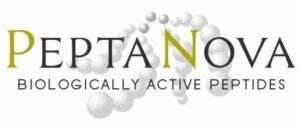Glucagon-like Peptide 2 (Human)
GLP 2 (Human)
4376-v 0.5 mg | 195.00 EUR
His – Ala – Asp – Gly – Ser – Phe – Ser – Asp – Glu – Met – Asn – Thr – Ile – Leu – Asp – Asn – Leu – Ala – Ala – Arg – Asp – Phe – Ile – Asn – Trp – Leu – Ile – Gln – Thr – Lys – Ile – Thr – Asp
| (M.W. 3766.1) | C165H254N44O55S | [223460-79-5] |
Synthetic Product (Trifluoracetate Form)
The purity is guaranteed to be higher than 99% by HPLC
The proglucagon gene encodes glucagon, glucagon-like peptide 1 (GLP-1) and GLP-2 tandemly. Among these, the location and function of GLP-1 have long been studied, showing that GLP-1 is one of the typical brain-gut peptides and has pleiotropic functions, including stimulation of insulin gene expression, regulation of food and water intake, etc. The chemical structure of this peptide in human ileum has been reported very recently to be identical to the 33 amino acid residue peptide corresponding to proglucagon (126-158). GLP-2 is present in human plasma, the concentration of which has been shown to be elevated 3- to 4-fold after ingestion of a meal. More recent studies have revealed that GLP-2’s immuno- reactivity is distributed in rat brain, especially in the ventral part of the dorsomedial hypothalamic nucleus (DMH) (and also found in the paraventricular and arcuate nuclei). Central administration of GLP-2 decreases food intake in ad libitum-fed rats at concentrations above 5 µg. This inhibition is effective for a short-duration. Surprisingly the GLP-1 receptor antagonist, exendin (9-39), reverses the GLP-2 induced anorexia, although the GLP-2 receptor is expressed in the compact part of the DMH. In addition, GLP-2 decreases Neuropeptide Y – induced food intake by 40%, but this peptide does not affect angiotensin II – induced drinking behavior.
References:
- B. Hartmann, A.H. Johnsen, C. Örskov, K. Adelhorst, L. Thim and J.J. Holst, Peptides, 21, 73 (2000) (Pharmacol)
- M. Tang-Christensen, P.J. Larsen, J. Thulesen, J. Römer and N. Vrang, Nat. Med., 6, 802 (2000) (Pharmacol)
- D.J. Drucker, Gut., 50, 428 (2002) (Review)


